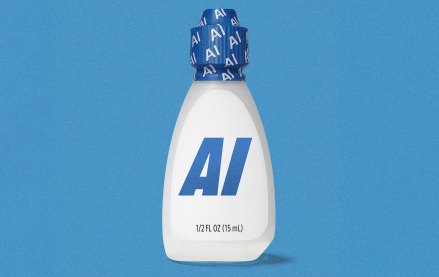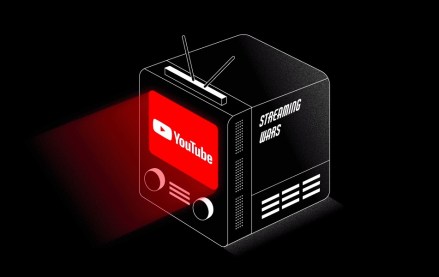Netflix’s ads boss on the next phase, and how Amazon accelerates it

Netflix has spent three years convincing advertisers it was serious about building an ads business. Now, it’s talking like one that expects to be on every major media plan – not as a novelty but as a line item with weight behind it.
A big part of that push is its reach, which the streamer now describes with a new “Monthly Active Viewers” metric. As it stands, that count comes to more than 190 million globally. The math: subscribers who have watched at least one minute of ads on the platform a month, multiplied by the estimated average of people in a household.
“We always knew that Monthy Actice Users (MAU) was a conservative representation of our reach, because Netflix viewing is oftentimes a very communal experience,” said Netflix’s vp, finance and strategy Mitzi Reaugh. “MAU did not capture any co-viewing, which is why we’re thrilled to share a more complete metric, one that really reflects the scale of our ads business.”
The shift is meant to give marketers a steadier read on how many people the ad tier actually reaches. Prior reporting relied on the number of profiles watching ads – a framing that didn’t truly match how Netflix is typically consumed in living rooms. The new metric is to be built to correct for that gap.
Whether it changes how budgets move is another matter. Many advertisers still transact on impressions and guaranteed delivery. But the metric strengthens Netflix’s case in planning conversations and helps reassure advertisers who are looking for signs that Netflix’s ad tier is maturing into a stable, measurable business.
“MAV is not just the number of accounts on the ads plan, because that’s not what matters most to advertisers,” said Reaugh. “What matters most is the number of people watching Netflix.”
What also matters is the price paid to reach those people. Netflix inventory currently averages around a $30 CPM with rates climbing when data and targeting layers are applied. That will factor heavily into how the platform is evaluated against other premium video buys.
“Inventory prices have decreased since the days of Netflix’s uber-premium CPM when their ad offering was first introduced,” said Ben Vaske, brand media supervisor at Collective Measures. “Floor prices are competitive with other streaming platforms, but additional charges for any sort of SSP-applied targeting increase clearing prices to a point where advertisers may need to add up to 40% on top of floor prices to add demo/geo/genre targeting.”
That context is why Netflix’s recent deal with Amazon has drawn so much attention. Buyers can use Amazon’s DSP to purchase Netflix inventory, and Amazon offers discounted fees when the DSP is used to buy third-party CTV. In some cases, it could actually be cheaper to buy Netflix through Amazon than anywhere else.
Netflix executives didn’t address those pricing dynamics directly but they emphasized momentum.
“We want to make sure that we’re meeting our advertisers where they’re at regardless of what DSP they are signing up to contract through,” said Amy Reinhard, Netflix’s ads president. “So we’re happy with what we’ve seen. We think there’s a lot of opportunity to grow. And as I mentioned on an earlier question, this is the first part of an integration that we’re doing with Amazon. And so I think a lot more to come over the course of the first half of 2026 there.”
Speaking of Amazon, it’s not the only piece of Netflix’s growing ad tech stack. That stack, rolled out six months ago, pairs Magnite as the supply-side platform to handle the marketplace where its ads are sold with Netflix’s own ad server, which controls how and where ads are delivered. Amazon is one of several buying platforms plugged into that setup, alongside Google’s Dv360, The Trade Desk, Yahoo and AJA in all 12 of its ad supported markets.
Alongside that foundation, Netflix is rolling out more audience tools. Advertisers can now target based on education, marital status and household income. In-market segments like people shopping for travel, luxury cars and dining experiences are also being added. Furthermore, Netflix is expanding its first-party data onboarding via LiveRamp to more major markets.
A planning API is in testing with agencies to help map available audiences against client planning tools, with Netflix aiming for real-time forecasting baked into that workflow by 2026.
Format experiments begin
The streamer is testing interactive, modular video formats in the U.S. These are ads that adapt based on viewer behaviour. If early testing holds, the company plans to make the format available globally next year. This is another area where Netflix wants differentiation. While many streamers are still optimizing pushing pre and mid-roll ads, Netflix is trying to attach a narrative of creative experimentation and interactivity to its own inventory.
Live events as brand real estate
Live sports and tentpole pop culture franchises continue to anchor Netflix’s pitch. Dynamic ad insertion is rolling out across live programming, starting with WWE Raw and Smackdown and expanding to the NFL Christmas slate this year. The company expects this to scale more widely next year.
Brand integrations also take a bigger role around flagship shows, For instance, the upcoming season of Stranger Things is spawning limited edition snacks, legacy beverage revivals and retail partnerships across the U.S. and Latin America. Meanwhile, the fifth season of Emily in Paris arrives with a global Peroni campaign while the NFL Christmas Gameday slate will feature FanDuel, Verizon, Accenture and Tide.
The stakes
Netflix’s ad tier is now a core lever in its pricing strategy. It gives it a lower-cost of entry, helps steady subscriber growth and plays a role in keeping churn down among higher-paying customers. There is still infrastructure to build – better frequency controls, sharper measurement – but the message is clear: Netflix sees the test phase as over.
More in Marketing

Lowe’s wants to do more with AI shopping in 2026
Mylow, a shopping assistant powered by ChatGPT that launched in March, is already driving double the conversion rate for online shoppers.

‘This isn’t the old pre-roll world’: YouTube has been talking TV — now it’s selling that way
YouTube is ramping up efforts to get TV’s largest advertisers to move more of their budget into its platform.

As every screen becomes shoppable, attribution problems resurface
As more media environments become points of purchase, attribution and measurement remain the thorn in the side of commerce execs.







